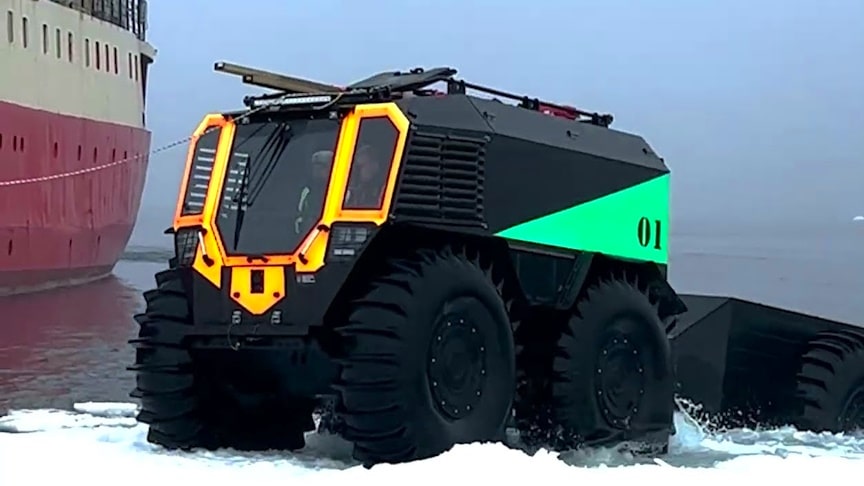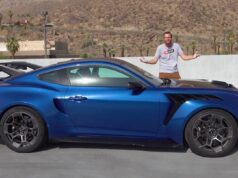The Sherp N 1200 is undoubtedly the most unusual, and one of the most capable, all-terrain vehicles currently being manufactured anywhere in the world. This summer, three SHERP UTVs took part In Arctic Rift Copper Project in Greenland. ARC is significant, large-scale project with historical exploration results indicative of an extensive mineral system with potential to host world-class copper deposits.
The Sherp N 1200 is a four-wheel drive vehicle built around a galvanized steel platform-type chassis with an aluminum alloy upper body for weight reduction. There is no traditional steering system, instead the vehicle uses skid steering operation like a tank.The tires have large paddle-like ridges which help with traction, and they also assist with movement through the water and they measure in at 71″ x 23″ x 25″.Power is provided by a Doosan 1.8 liter three-cylinder turbodiesel engine that t produces 55 bhp and 140 lb ft of torque, the engine is specifically designed for agricultural and construction related machinery making it a good fit for the Sherp.
Power is sent back through a 6-speed manual transmission and from there to all four wheels. The top speed is 40 km/h (25 mph) on land and 6 km/h (4 mph) on water, with a minimum speed on land of just 2 km/h (1.2 mph).The most advanced prospect within ARC is the copper-silver bearing discovery zone, located at the northern end of Neergaard Dal. The discovery zone is comprised of at least three parallel Brescia faults trending northwest-southeast, with the furthest faults being around 2km apart. The faults are traced for a minimum of 2km along strike before they disappear underneath moraine. The Discovery Zone is open in both directions.
Advertisement
Initially, the expedition members traveled to their destination by ship, and then through different parts of the earth’s surface. That is why, to overcome all sea and terrestrial obstacles, the investigators needed SHERP utility task vehicles. In expedition used 3 all-terrain vehicles with a unique custom design. The members of the expedition sailed on all-terrain vehicles, rode on snow, ice, left the water and ice on the shore.











